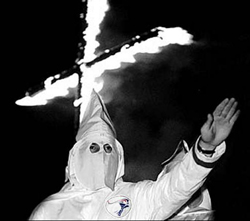|
Lessons of the Fourteenth Amendment - Heller, McDonald and Halbrook
Part 1
Stephen Halbrook’s
Freedmen, the Fourteenth Amendment, and the Right to Bear Arms, 1866-1876
is a
“study [that] traces the adoption of, and investigates the interrelationship between, the Fourteenth Amendment and the civil rights legislation passed during Reconstruction, particularly focusing on the right to keep and bear arms. It begins with a day-by-day account of the congressional proceedings in the Thirty-Ninth Congress leading to the passage of the Civil Rights and Freedmen’s Bureau Acts of 1866 and the Proposal of the Fourteenth Amendment” (Hallbrook, page ix - footnotes are presented at the end of this series of pages.)
Hallbrook's work also docuemnts the often underplayed aspect of the 14th Amendment being specifically passed in support of private gun ownership.
 The end of the Civil War was not the end of tyranny against the newly freed slaves. Following the Civil War, former slave owners interested in maintaining their position of power worked with southern state and local governments to implement a myriad of gun control laws against the freed slaves. These laws were publicly argued as reasonable measures for safety, but – as documented by Holbrook - were in reality based in the fear of a rebellion and (in some cases) to impose non-institutionalized slavery upon a defenseless population. “
E.G. Baker, a white Mississippi planter, wrote a letter to members of the state legislature on October 22, 1865, warning of a possible negro insurrection. He added ‘It is well known here that our negroes through the country are well equipped with fire arms, muskets, double barrel shot guns & pistols, . . .’ Forwarding a copy of the letter to the Union commander in northern Mississippi, Governor Benjamin G. Humphreys warned that ‘unless some measures are taken to disarm [the freedmen] a collision between the races may be speedily looked for.’ (footnote 7,
Halbrook, page 2.)
The end of the Civil War was not the end of tyranny against the newly freed slaves. Following the Civil War, former slave owners interested in maintaining their position of power worked with southern state and local governments to implement a myriad of gun control laws against the freed slaves. These laws were publicly argued as reasonable measures for safety, but – as documented by Holbrook - were in reality based in the fear of a rebellion and (in some cases) to impose non-institutionalized slavery upon a defenseless population. “
E.G. Baker, a white Mississippi planter, wrote a letter to members of the state legislature on October 22, 1865, warning of a possible negro insurrection. He added ‘It is well known here that our negroes through the country are well equipped with fire arms, muskets, double barrel shot guns & pistols, . . .’ Forwarding a copy of the letter to the Union commander in northern Mississippi, Governor Benjamin G. Humphreys warned that ‘unless some measures are taken to disarm [the freedmen] a collision between the races may be speedily looked for.’ (footnote 7,
Halbrook, page 2.)
|
|
|
 Further on this point,
“after asserting that South Carolina whites sought a ‘disarmed and defenseless’ black population, General Saxton testified that the probable effect of disarming the freedmen would be to ‘leave their condition no better than before they were emancipated.”
(185, Halbrook, page 23) In many cases, blacks were prohibited from owning any form of self protection including knives. Sweeps of black homes to collect arms were often followed by visits from the Ku Klux Klan to murder the recently disarmed freed men. Similar prohibitions for ownership of any “weapon” including knives or clubs were imposed by the Nazi’s to enable the rounding up of Jews prior to World War II. "The most foolish mistake we could possibly make would be to allow
the subject races to possess arms. History shows that all
conquerors who have allowed their subject races to carry arms
have prepared their own downfall by so doing." (Adolf Hitler, HITLER'S SECRET CONVERSATIONS 403 (Norman Cameron and R. H. Stevens
Further on this point,
“after asserting that South Carolina whites sought a ‘disarmed and defenseless’ black population, General Saxton testified that the probable effect of disarming the freedmen would be to ‘leave their condition no better than before they were emancipated.”
(185, Halbrook, page 23) In many cases, blacks were prohibited from owning any form of self protection including knives. Sweeps of black homes to collect arms were often followed by visits from the Ku Klux Klan to murder the recently disarmed freed men. Similar prohibitions for ownership of any “weapon” including knives or clubs were imposed by the Nazi’s to enable the rounding up of Jews prior to World War II. "The most foolish mistake we could possibly make would be to allow
the subject races to possess arms. History shows that all
conquerors who have allowed their subject races to carry arms
have prepared their own downfall by so doing." (Adolf Hitler, HITLER'S SECRET CONVERSATIONS 403 (Norman Cameron and R. H. Stevens
trans., 1961)
The Federal Government’s response to the Southern states abuse of power was the Freedmen’s Bureau – a temporary Bureau to address such issues during the Reconstruction - and the Fourteenth Amendment. Although open tyrrany against freed slaves continued throughout the Reconstruction, as documented in the KKK trials, culminating in the Grant Parish Massacre and Cruikshank trial in 1873, the 14th Amendment to the Constitution was signed in July 1868 to secure Rights of citizenship, including the Right to Bear Arms, to anyone born in the country, including the former slaves. It reads, in part:
Section 1.
All persons born or naturalized in the United States, and subject to the jurisdiction thereof, are citizens of the United States and of the State wherein they reside. No State shall make or enforce any law which shall abridge the privileges or immunities of citizens of the United States; nor shall any State deprive any person of life, liberty, or property, without due process of law; nor deny to any person within its jurisdiction the equal protection of the laws.
At the same time that the Fourteenth Amendment was being drafted to provide equal protection under the law the freed slaves, another group of people were being denied the same protections – American Indians. American Indians were denied various aspects of citizenship, protection under the law and specifically gun ownership through the 1970’s beginning primarily a means of the United States “winning” the west and later to maintain control over the subjugated population. But this is a discussion for another time.
Continue to Part 2

|



